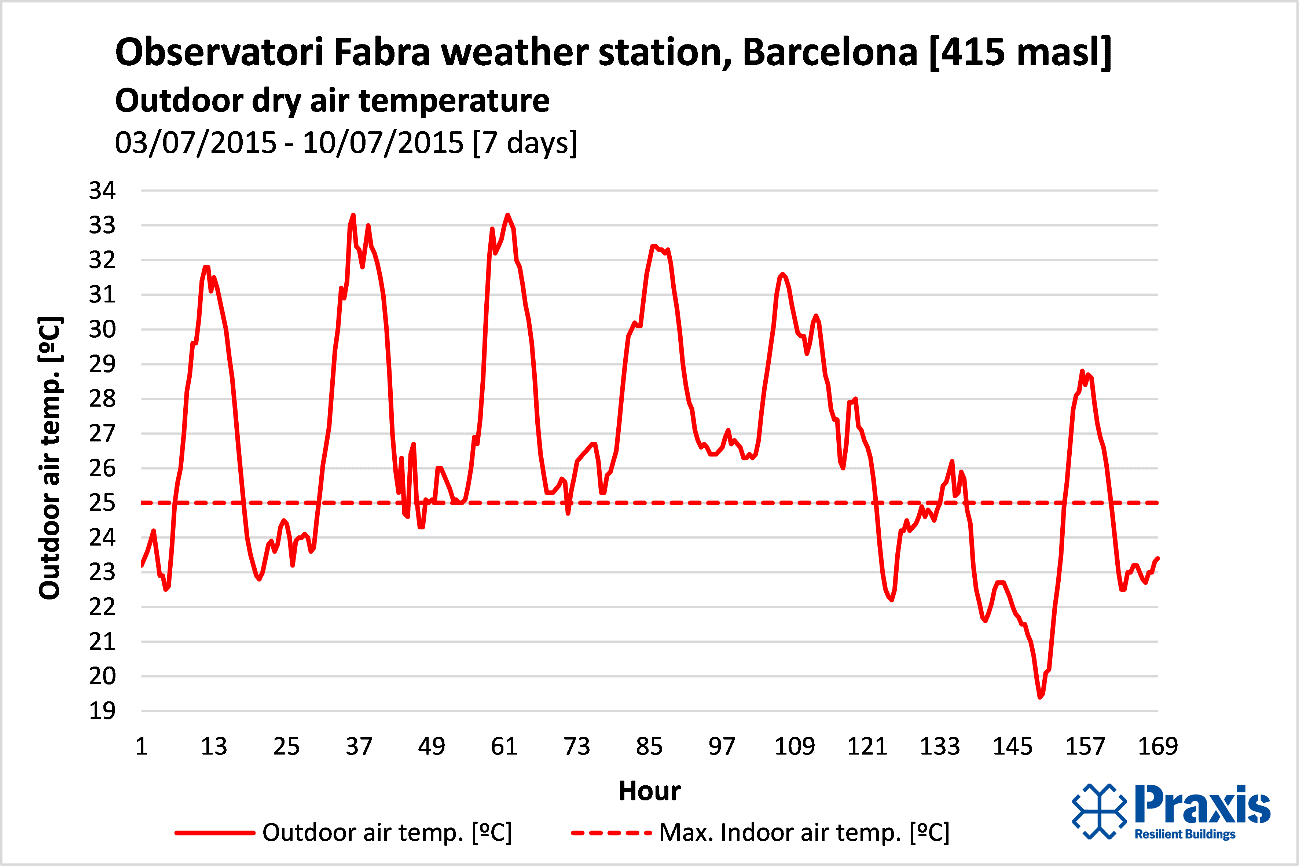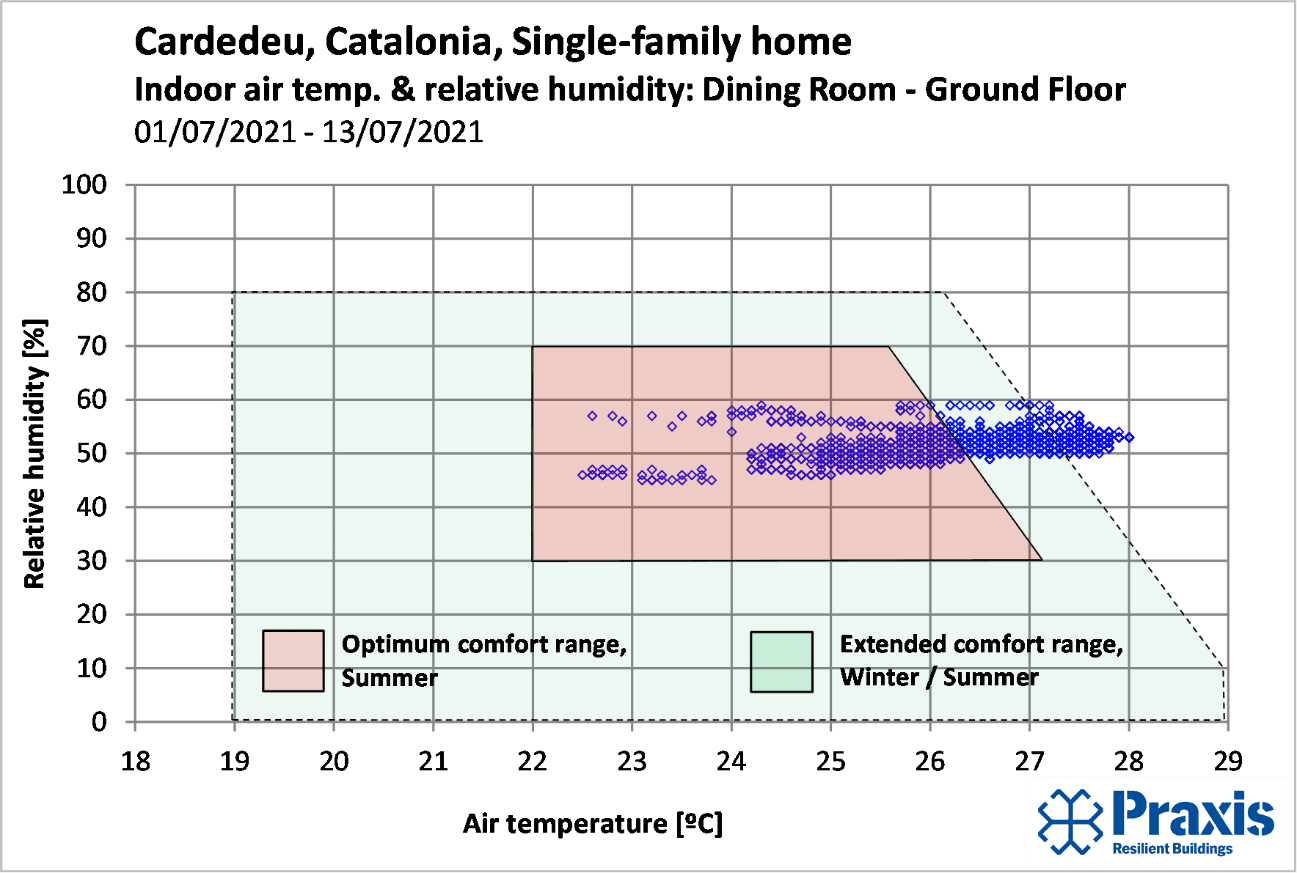Keep cool and carry on: Passivhaus cooling experiences in the warm climates

With rising global temperatures and increasingly frequent summer heat waves, keeping cool in Passive House buildings has become a hot topic.
Keep cool and carry on: Passivhaus cooling experiences in the warm climates
With rising global temperatures and increasingly frequent summer heat waves, keeping cool in Passive House buildings has become a hot topic.
Bad jokes aside, overheating can be deadly: in France the peak mortality rate during the 2003 heat wave was higher than during the first wave of COVID in 2020, shown in Figure 1 [Parienté et al 2021].

[Source: Parienté et al 2021]
Active cooling in all climates warmer than warm-temperate looks like it will become standard. The question is: for cool-temperature climates, is passive cooling sufficient, or is active cooling unavoidable? What are the pros and cons of the different systems? Will my client ring me up during the next heat wave and give me an ear full?
The article provides technical analysis and lessons learnt from 10 years of experience applying passive and active cooling strategies in residential Passive House buildings in Catalonia, Spain. 6 different kinds of active cooling systems that have been designed and installed in single-family Passivhaus homes are compared, assessing the simplicity or complexity of design, installation, and commissioning; upfront costs; user-friendliness, robustness, and comfort; environmental impact of refrigerants for active cooling systems; and the bottom line: measured performance and monitoring data.
Passive cooling
Careful design, moderately sized and well shaded openings, close attention to local climate, and active users have been found to be some of the key drivers of successful passive cooling. Reduction of internal heat gains is key, with efficient appliances and compact Domestic Hot Water (DHW) systems that avoid the need for recirculation circuits. If recirculation circuits are unavoidable, they need high levels of insulation and flow rate control, with reduced DHW water supply temperatures- so long as this is compatible with Legionella prevention. Ultrafiltration and chemical shock disinfection are promising alternatives to the conventional solution of high DHW supply temperatures and thermal shock prevention.
External shading devices are essential, ideally with motorised external blinds, either user controlled or automated. Even north facing windows in Passivhaus buildings need shading: the very long time constant of Passivhaus buildings mean diffuse solar radiation can cause overheating. If only fixed shading can be used, then appropriate solutions for each orientation are key, with particular attention to east and west facing glazing, which receive more solar radiation in the summer than south-facing glazing (shown in Figure 2). Deep horizontal overhangs on southern glazing work best (or northern glazing in the southern hemisphere), with slanted vertical fins for east and west-facing glazing.

Natural night ventilation combined with thermal inertia works well when night temperatures are sufficiently low. Cool external colours, high levels of insulation on roofs, ground coupling, and ceiling fans, are also effective strategies. Figure 3 shows an example of measured data for a single-family home employing many of those strategies (but with little thermal inertia).

Passive cooling is in general simple, low-cost, easy to install, maintain and commission, and can deliver good performance. However, passive cooling strategies are highly climate dependent and rely on careful user behaviour. Where average air temperatures and levels of solar radiation are high (hot ground), minimum night temperatures do not drop below ~ 20 ºC (limited cooling power from natural night ventilation), and night sky temperatures and outdoor air humidity are high, passive cooling won’t work. In this case, active cooling is unavoidable to maintain comfort. Figure 4 and Figure 5 show an example of climate conditions in which passive cooling strategies won’t work, during the 2015 heat wave in Barcelona, Spain.


Active cooling
6 different cooling systems that have been designed and installed in residential Passive Houses are compared, assessing 6 criteria through a simple 1-to-5 point scoring system, shown in Table 1. Monitored data is provided for systems System 1, 2, 5 and 6.

Radiant cooling systems offer a high level of comfort and efficiency, but are more complex to design, install and commission, with higher capital cost. Humidity control and cooling power has been found to be problematic in warm and humid climates, where users go in and out of the house (garden/balcony etc.). Monitored data for an underfloor cooling system is shown in Figure 6. Figure 7 shows monitored data for a radiant ceiling system.


Low-temperature radiators (set in the floor, or wall-mounted) offer a reasonable balance between simplicity, cost, efficiency, and comfort, albeit with less cooling power than fan-coils and splits, requiring a greater number of individual units to cover the same given area than a ducted fan-coil/split system (where 1 indoor unit can cool several rooms). Figure 8 shows monitored data for this kind of system.

Supply air cooling has been found to be problematic, due to limited cooling power (a consequence of conditioning outdoor air rather than recirculating indoor air, low flow rates, and heat gain along long duct runs). Power can be increased using partial recirculation but monitored data in Figure 9 shows that temperature and relative humidity often move outside the extended comfort range. The advantages of this kind of system are simplicity and low capital cost, but the limited cooling power means passive cooling measures must be robust: once overheating has set in, the system will struggle to eliminate heat.

Conventional convective solutions through the recirculation of indoor air (i.e., ducted or wall-mounted fan-coil or split systems) have been found to be the most robust. They are generally simple to design, install and commission, have a lower capital cost than radiant systems, and power can be modulated to deal with peak loads. They are less comfortable than radiant systems. Split systems using refrigerant distribution offer greater dehumidification power (due to lower refrigerant sink temperatures than water) with a faster response than fan-coils and water distribution. However, the Glower Warming Potential (GWP) of the refrigerants and risk of leaks from on-site manipulation is an important consideration. Figure 10 shows monitored data for ducted split system. Temperatures outside the extended comfort range are during hours when the home was not occupied, and the clients report a high level of thermal comfort.

